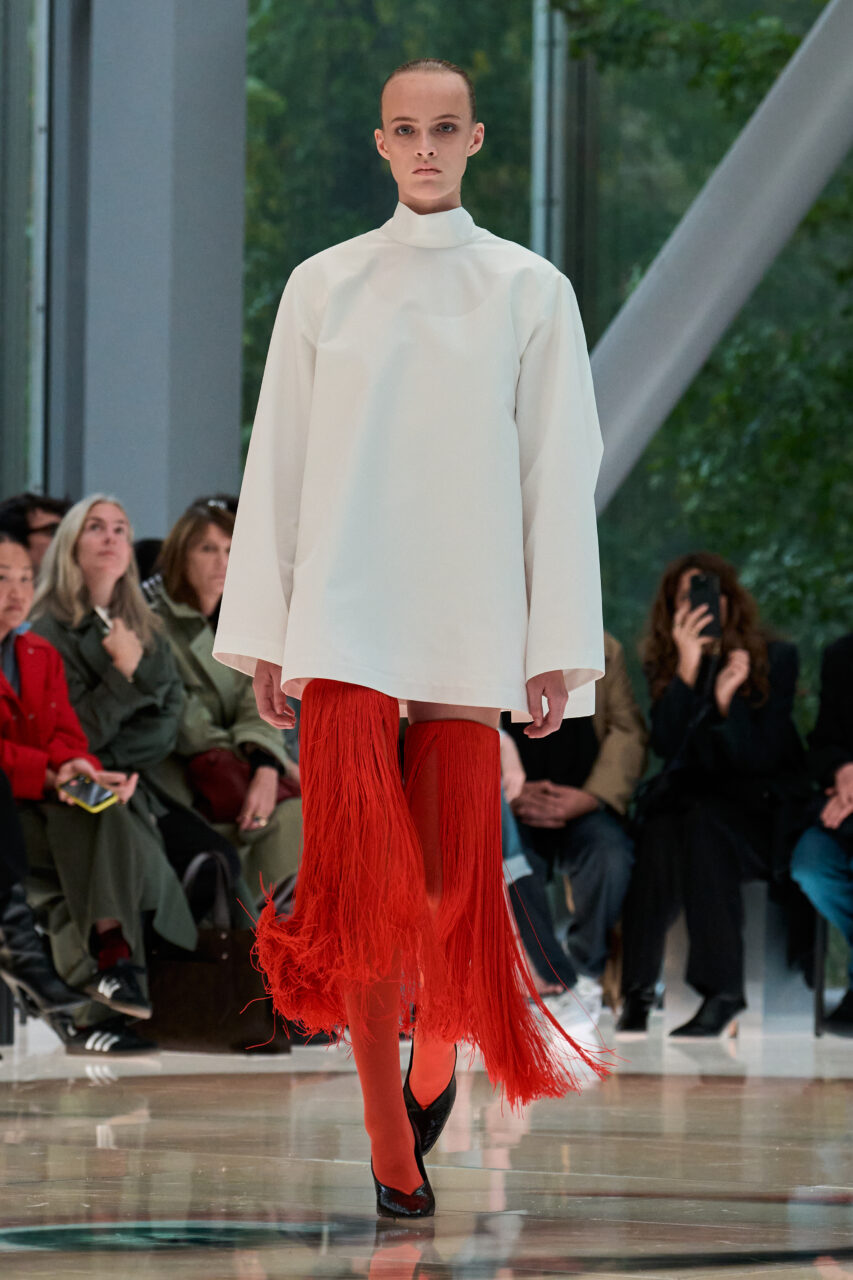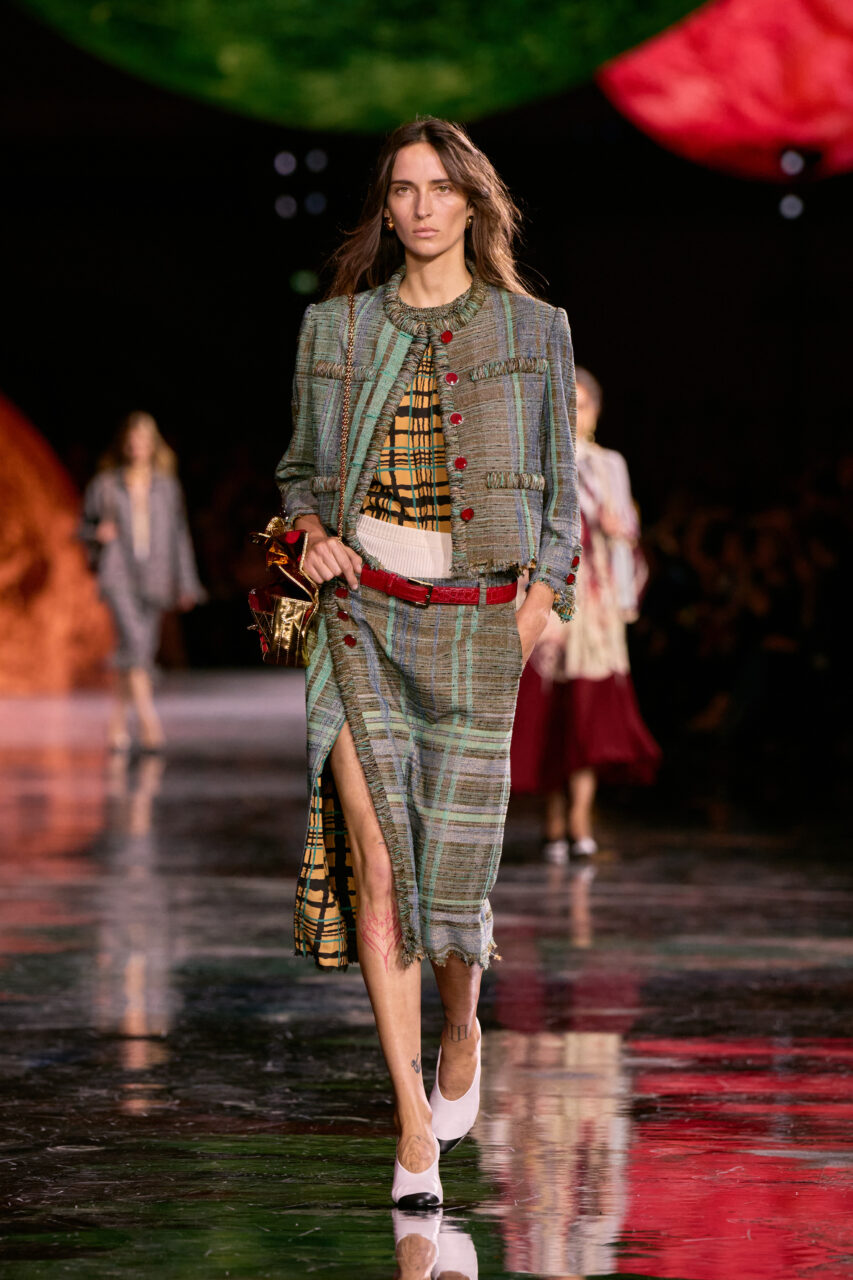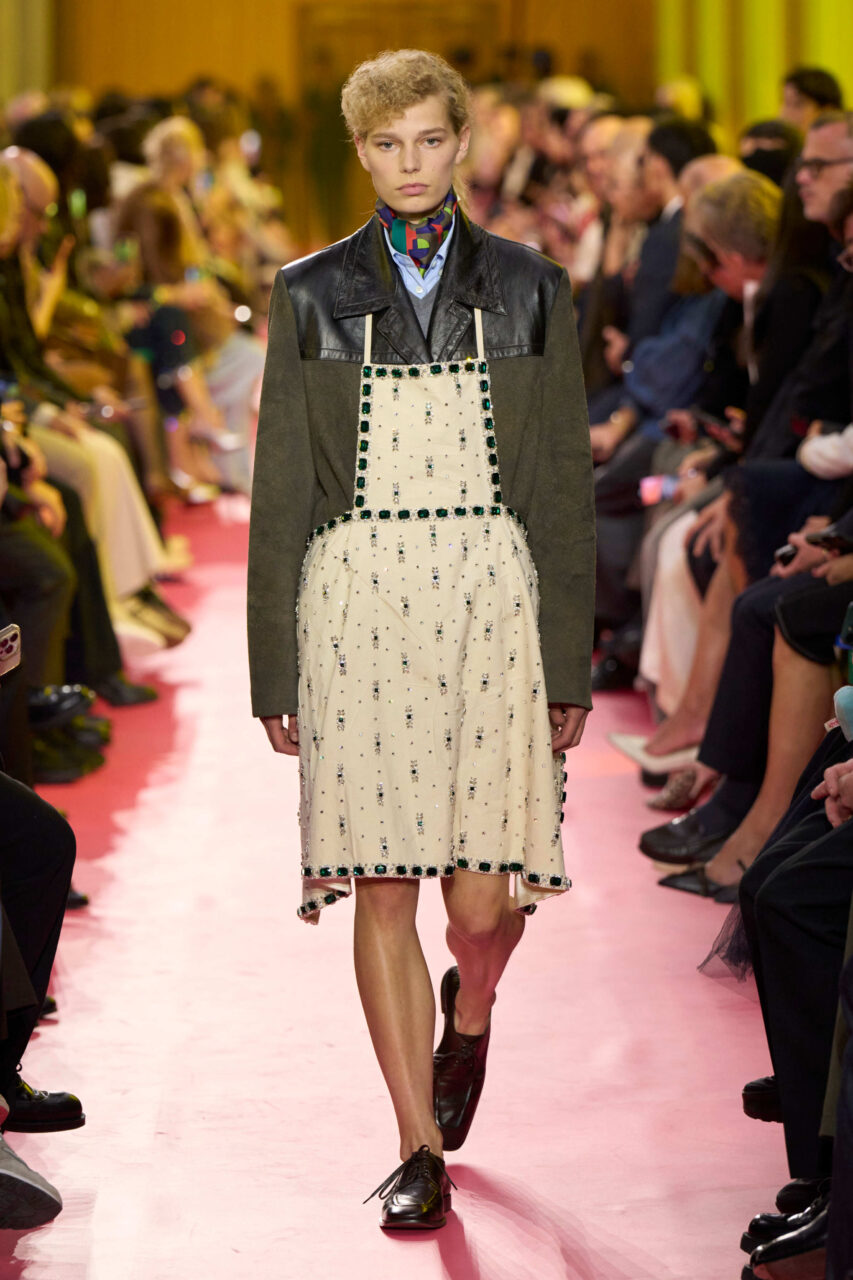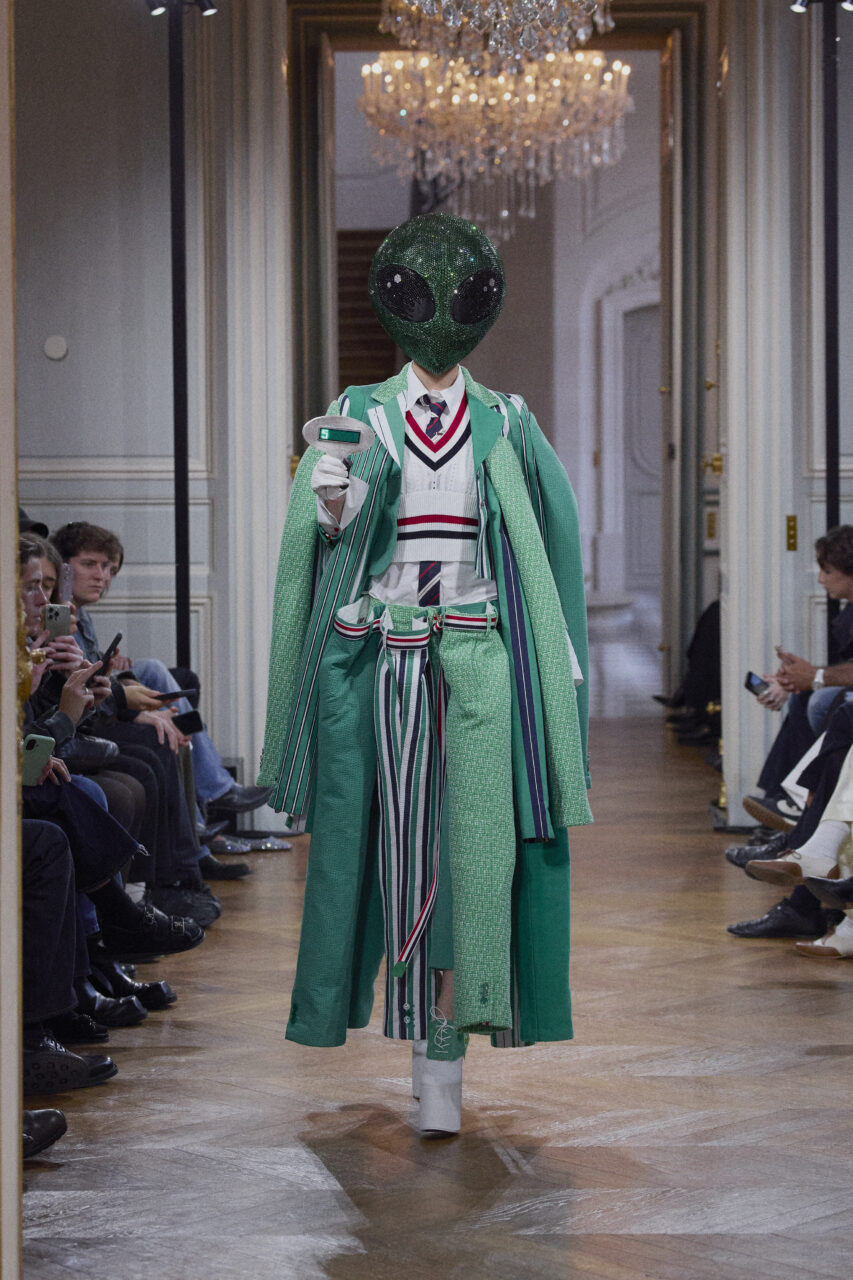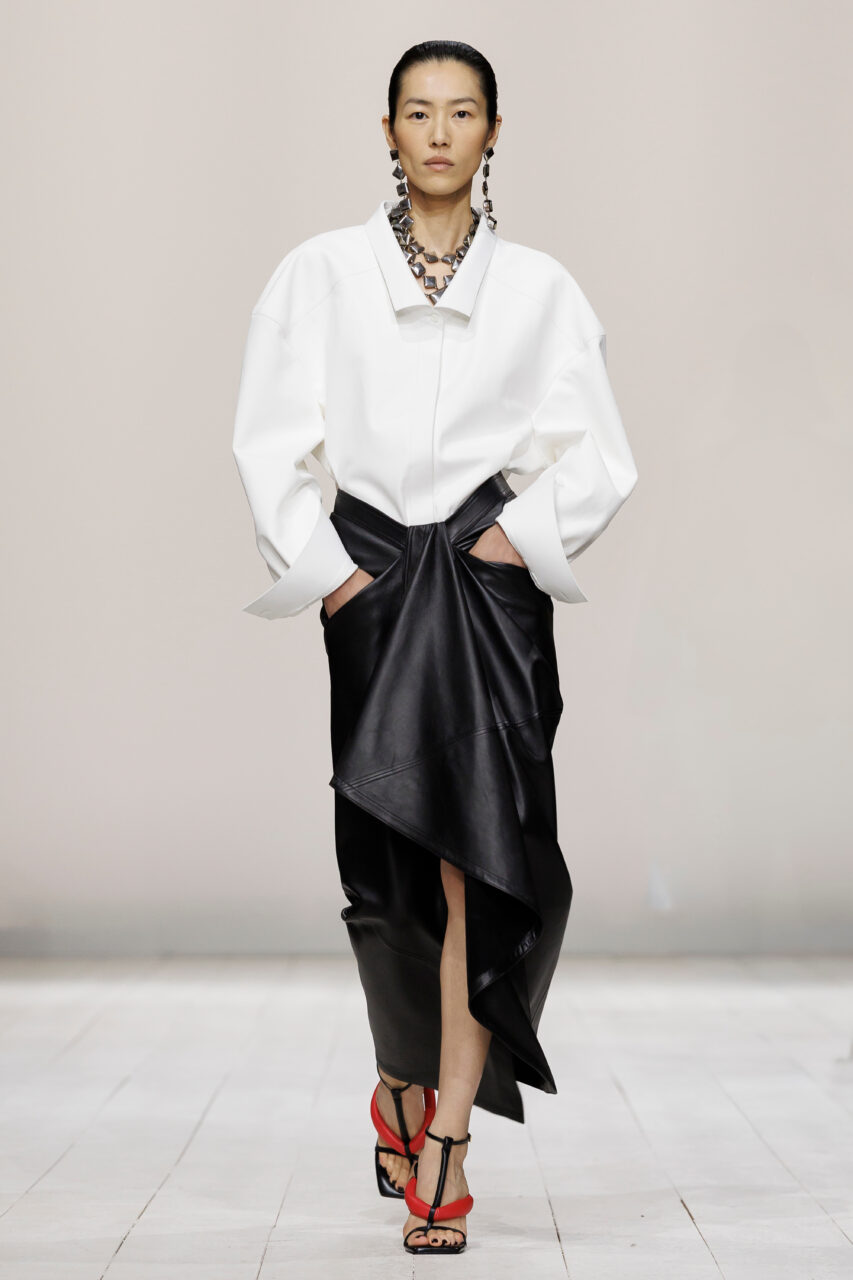A great reckoning over the soul of luxury fashion is playing out across the shows this season. Questions that have been building up in the background for years are finally being asked. What does it mean and who is it actually for? Does the past count for anything? What role do creativity and daring play when commercial and data-driven social media pressures are more acute than ever—and when world events seem near apocalyptic?
At Alaïa Pieter Mulier created a scenario he intended as both an escape from and a confrontation with some of these things. “In the world that we live in now, I wanted to create something of pure beauty as a base, mixed with the tension that we live in every day,” he said to journalists backstage. “I wanted you guys to feel you were in a cocoon for 10 minutes—this thing of an absolute dream—but still with a tension.” And then he added, “I wanted clothes that cry.”
The ‘cocoon’ was a mesmerizing digital display worthy of an art performance—a floor lit up with digital photos of the faces of the models who were walking across it, while the moving imagery was mirrored by the ceiling above. Occasionally the picture shifted to what looked like a scan of a body, rendered in tiny black dots. This, of course registered as bright and smart—and amazingly it did not interfere with the ability to inspect the clothing close up.
It was technically spectacular, and methodically divided into distinct stories. First came the surprise: pure, stark cotton tunics with stand-collars. “I found a short coat that Azzedine made in 1980, that he also wore himself, and I found the simplicity of that so relevant today,” said Mulier.
As an opener, it was a long stride away from the hyper-sexual silhouettes Mulier was designing when he stepped into the job in 2022, as well as an invitation to an adult kind of chic that he hasn’t extended much thus far. He’d paired the tunics with stockings from the tops of which cascaded silk fringes—erotically charged accessories which also seemed to symbolize the flow of tears in Mulier’s mind.
He said he’d been searching for “different ways to do body-con.” Partly that meant pushing the techniques of silk knitwear to become seamless arched shapes, tautly held in place at wrists, and hooked into shoe-heels. Aside from those, there were iterations of Alaïa’s famed fit-and-flare knit dresses, but with angled skirts instead of flounces.
Mulier’s architectural experiments with shape and silhouette produced hybrids: open-sided skirt-pants, backless turtleneck sweater-leggings. Coats became huge, glamorous soft sculptures of twisting fringe layers.
At the end came stately duchess satin ball-skirts, vaguely panniered: Mulier’s contribution to the strange rise of 17th- and 18th-century costume references that have been playing out in so many collections. He definitely belongs to the class of designer who dares to be creative, while also nodding to the DNA of the house he’s in.
This collection was a visual spread for stylists and celebrities who look to cause conceptualist drama—Mulier has captured that audience for a while. As for responding to the times? There was a spread, too, of easier shapes: those chic tunics, edge-to edge jackets and sweeping coats with an abstract air of North African burnouses. Call that his appeal to extending Alaïa’s commercialism—but it looked great, too.
Editor
Sarah MowerCredit
Lead Image: Courtesy of Alaïa